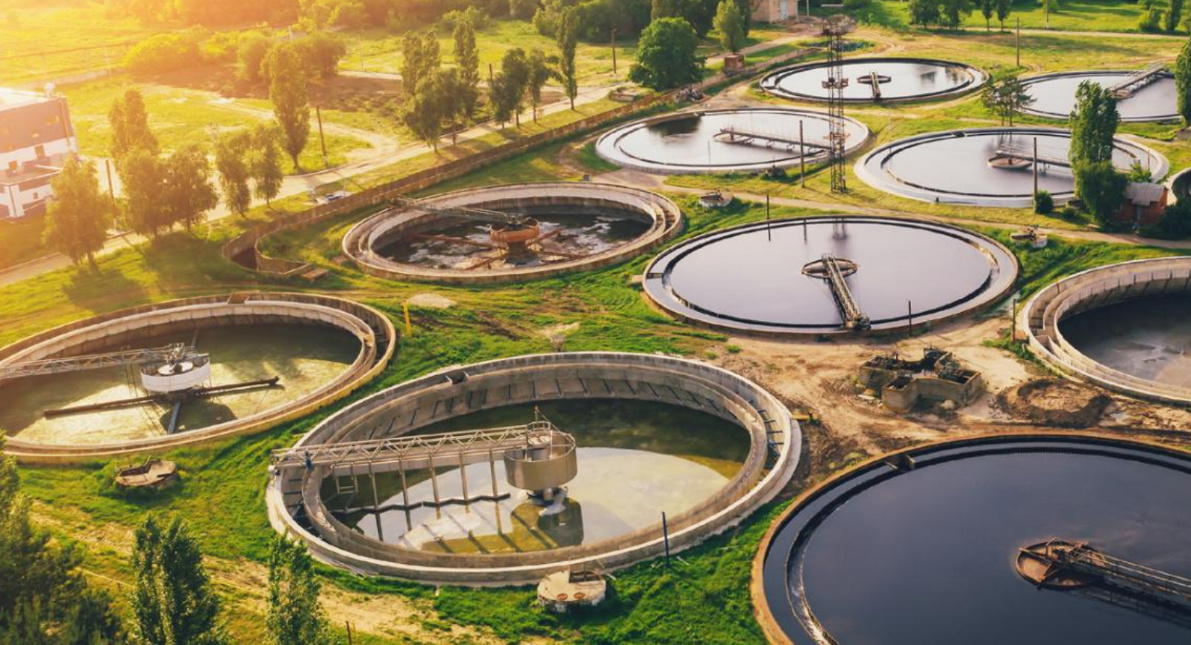Accelerating action: navigating pressure to innovate in the water sector

Examples of adaptation and innovation can be found all over the water sector these days. At Sydney Water, Melbourne Water and several other large water corporations, the intention is to reach net zero Scope 1 and 2 carbon emissions by 2030.
At SUEZ, the company is embarking on a three-year global mission to achieve its vision of ‘cycles for life’, including elevating its annual investment in pure research and development to €100 million (AUD$165 million).
And in the Victorian town of Colac, Barwon Water’s wastewater treatment plant doesn’t just power itself, it also feeds 500 houses worth of electricity back into the grid and offsets around 350 houses worth of gas usage annually.
The water sector arguably has good reason to behave conservatively around change of process, policy and technology, but organisations are proving that innovation, adaptation and transformation are possible. This is occurring even as regulations are tightened, a new National Water Agreement is being developed, and reporting frameworks, including climate-related financial disclosures, are introduced.
Mandatory climate-related financial disclosure came into play in July 2024 for FY2025, including reporting current and anticipated climate risks over the short, medium and long-term. Disclosure requirements also cover climate resilience strategies, climate-related targets, offset contributions and transition plans.
Additionally, a broader focus on net zero, biodiversity and equity of service is driving expectations around behaviours, policies and performance, while the United Nations Sustainable Development Goals continue to spotlight numerous areas of water sector responsibility.
Even in this higher-pressure environment, water organisations are confident of success. Having once been considered reluctant to adapt, the water community is now accelerating innovation and adaptation towards a sustainable, equitable future.
Importance of cultural change
“Seven years ago, we had a mindset shift,” said Shaun Cumming, Managing Director of Barwon Water.
“In terms of understanding our role, we realised it wasn’t just about providing water and sewerage services. As a key essential service provider in our region, our role is to enable regional prosperity.”
The region was facing major challenges, including the effects of climate change and population growth. When Barwon Water began to see itself as an enabler of regional prosperity, it set several aspirational goals, including zero carbon emissions and zero waste, while maintaining affordability.
“Originally, we didn’t know how we would achieve the goals, we just knew they had to be achieved. That set us on a journey,” Cumming said. “It’s not about finding a way, it’s about finding the way – the very best way to do something.”
The journey included the building of capability through increased investment in a high-performance culture, with leadership as a key focus.
In a practical sense, this produced a strong desire to switch all of the organisation’s electricity requirements to renewables. Barwon Water invested early and significantly in solar and batteries at large wastewater and water treatment plants.
“We did a lot behind our meters,” he said.
“Then, with our lens of regional prosperity, we looked at how we could do all of this in ways that benefit our region and the industry.
"Through VicWater, we signed onto a power purchasing agreement with a wind farm in our region, in partnership with the local port and hospital. And we spoke to our industrial customers who said they want to do the same thing. We realised we had great capability and there was an opportunity for us to partner.”
This is how the wastewater treatment plant at Colac began providing energy to some local industrial partners. And that’s just the start.
Fast, careful innovation
“In terms of providing quality drinking water, managing wastewater and protecting the environment, our core goal with water is around managing risks,” said Kevin Werksman, CEO of SUEZ Australia and New Zealand.
“We’ll discover new technologies or innovations, but we’re very cautious about how quickly we can implement them. Sometimes we take a lot of time,” he said.
The hurdles include tight regulatory frameworks, the fact that water utilities are very large, public organisations, and, of course, the prioritisation of the requirements of communities.
How does SUEZ enable innovation in what appears to be an operating environment shackled by regulation? One solution has been the decision to take responsibility for supercharging the partnership model with water utilities.
“Traditionally, we might approach a water utility to pilot a particular innovation. They might apply it to one of their projects. What we’re looking at doing now is financing initial testing, potentially even the project itself, if there is something we trust to make a difference. If we bring it to life, we recover investment by partnering with water utilities and transferring it to them,” Werksman said
Examples of such projects include a digital tool that can improve energy usage: “That has been used in different spaces and we are exploring with SA Water on how we move to the next part of the program,” Werksman said.
“Because we work in an alliance with SA Water, we’re already responsible for the treatment costs, shared with SA Water. So that’s a great place for us to embrace the opportunity.”
Like Cumming, Werksman said the road to innovation success begins with the vision, or the “why”. And that comes from how the organisation perceives itself.
For Barwon Water, that perception is an enabler of regional prosperity. For SUEZ, the organisation sees itself as a custodian of resources. Both demand a focus on circularity, particularly around water and waste. At SUEZ, Werksman said transition has required a restructure of the ANZ operations.
“If we want to bring things to life quicker, we need to consider if people understand how to navigate the commercial part of the equation. We also need to leverage what’s being trialled globally and bring people together for true ‘open and transparent’ collaboration, where we also get the benefit of better insights through diverse views,” he said.
Having previously had a technically focussed Head of Innovation, SUEZ now has a Head of Growth and Innovation whose business development focus is on how to build a business that drives better outcomes. Their team identifies solutions to problems in the water industry sector and can unlock those solutions by not only meeting technical challenges but also demonstrating commercial innovation.
Ahead of change
While climate change has been recognised by the water community for a long time, the focus placed on sustainability has “waxed and waned”, according to Charles Agnew, Head of Sustainability & Climate Change Adaptation at Sydney Water. “But now climate change is firmly on everybody’s agenda. And sustainability is here to stay. At Sydney Water, we did some pioneering work in terms of climate change and mapping the exposure of our assets more than a decade ago,” Agnew said.
Staying ahead of the climate curve has helped Sydney Water avoid being overly challenged by new regulations and reporting responsibilities. The organisation already publicly reports its emissions, with the disclosure used as a tool to set benchmarks and drive outcomes in and around the business.
“To put it in context, Sydney Water spends around $50 million on electricity today,” Agnew said. “Our path to net zero means we will procure green electricity from renewable energy projects, and we self-generate a lot of renewables ourselves, including biogas, solar and hydro.
“Importantly, we’ve talked to our customers and they expressed a very strong willingness for us to get to net zero by 2030. We might have to pay 5% extra for green energy, but we’re confident we can deliver it for less than what customers are willing to pay.”
There are opportunities to supercharge co-generation at treatment plants by bringing in more organic and food waste to create more biogases, Agnew said, but that can only be achieved in partnership with waste management companies. Trials have been carried out and market feasibility is now being explored.
There is also enormous potential benefit in terms of emissions reduction from deeper research into the prevention of fugitive emissions from wastewater treatment plants, which currently presents a difficult-to-abate emissions conundrum.
“There is a clear shared problem across our industry with fugitive emissions. It is a problem that it would be best to solve together rather than individually,” Agnew said.
“But there are various research partnerships, with AWA and WSAA playing an important role. Melbourne Water has formed a partnership with utilities from the UK and Denmark. The University of Queensland has formed a centre of excellence in Australia around understanding and solving these types of problems. So, we’re all moving in the right direction.”
Many argue that the water sector isn't just moving in the right direction in terms of sustainability but is leading the way.
“How does the water industry lead in this space? We have unique capabilities in terms of infrastructure and skills. We have trusted relationships with customers and communities, and a long culture of collaboration,” Cumming said.
Sustainability issues cannot be solved by one party. The solution can only be collaborative.
“Water is in a position to be that enabler,” Cumming said. “We’re trusted and we’re not competing, so that enables us to unlock opportunities with councils, with industry and with communities.”
This article was originally published in the 2024 edition of Current, the Australian Water Association’s annual journal.

